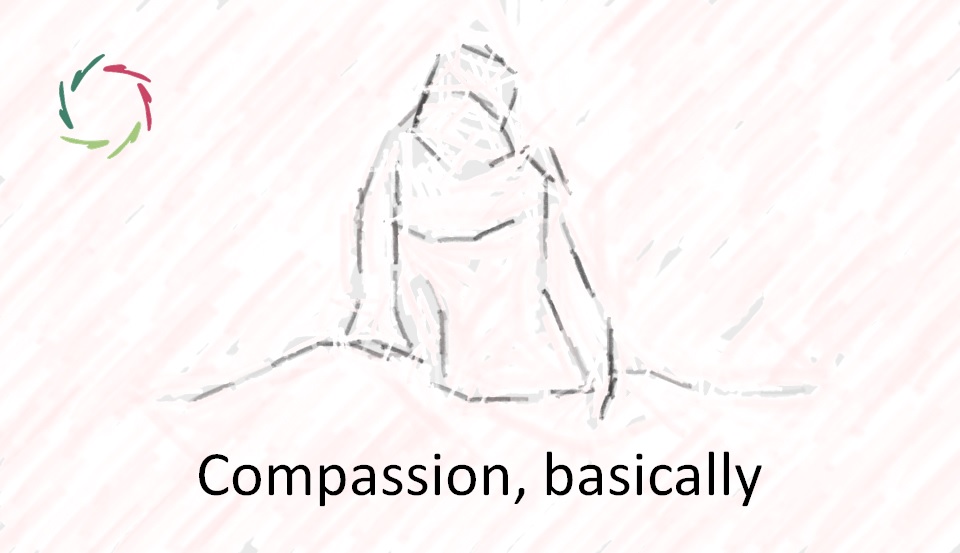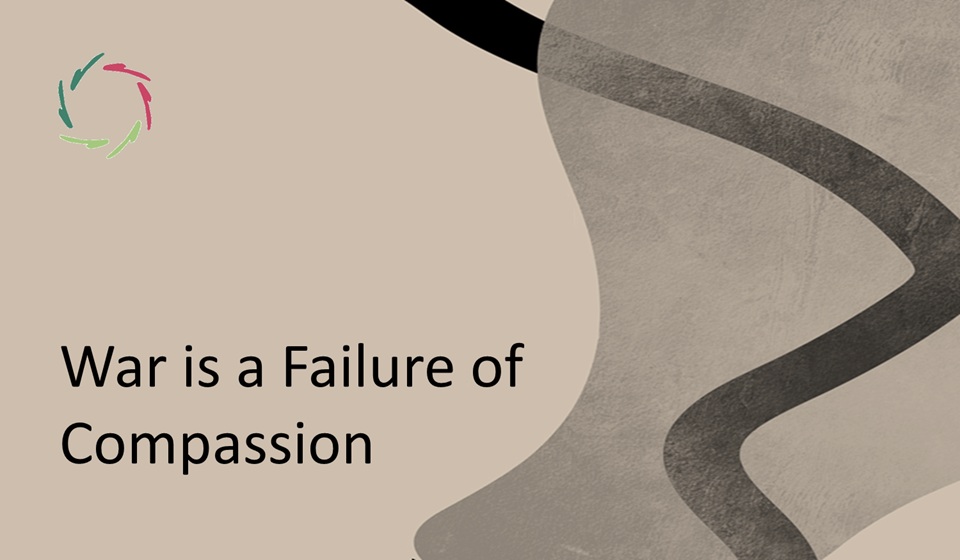Compassion, Basically

This text and diagram form an entry to the basic idea of Compassion as I write about in many blogs.
Compassion is SO much more than pity. Compassion is also more (going deeper) than empathy.
Preliminary
Note that the following diagram is but a mnemonic coat rack. It needs the proper coats for any correct understanding. Some of these are more intellectual, others more pragmatic, to be grasped by doing. Note also the why-what-how as an additional tool for memorization. Finally, the whole can be subsumed as ‘radically and ethically taking into account and caring for the total person.’
I write Compassion with a capital C because subconceptual processing is involved, making it a complex concept. One should never underestimate this complexity, especially not in Compassionate practice.
The one(s) towards which Compassion is felt can be any sentient being(s) ― even metaphorically. Conceptually, it can also include, for instance, a child having Compassion for a doll.
Empathy is an important part of Compassion. In the diagram, it is subsumed under ‘depth.’ For more about empathy, see “Landscape of Empathy” or category ‘Empathy’ on the AURELIS-blog.
Diagram

For more information about:
- Mental-neuronal patterns in subconceptual processing
- Rationality + depth
- Relief of suffering + Fostering growth, see “Two-Sided Compassion“
(Bidirectional) pattern recognition
This is central in the ‘how’ of Compassion. See “From Mirror Neurons to Mirror Brain.”
For instance, when talking to another person, one may consciously capture the conceptual content. Meanwhile, non-consciously, one captures much more: thousands of details and many meaningful patterns within this abundance.
Metaphorically speaking, Compassion leads to a profound overlap of mental patterns, for instance, while talking. One can see these as transparent blueprints that more or less resemble each other. Their resemblance can be appreciated by (mentally) overlaying them, bringing forward differences and similitudes just by looking ― no calculations needed, just looking in a deep, Compassionate way.
This appreciation can be done in one or two directions in the case of talking. AURELIS-coaching makes this into art and science. This way, the coach responds to the coachee and invites the coachee to be responsive to the coach. Bidirectional pattern recognition forms a deep-to-deep communication whereby the coachee can change/grow from the inside out, supported by the coach.
Ethics is of prime importance in this, as it is in any Compassionate endeavor. For instance, in a coaching situation, none of both should lose oneself in the other person. Both should grow from the process, each time again. There should be no instrumental changing of the mind, no reprogramming of any sort.
Compassionate attitude
Compassion encompasses feeling but is not restricted to this. It is an attitude in which feeling and thinking are deeply intertwined. Within the ‘what,’ rationality may seem more related to thinking, depth more to feeling. In reality, both are so much intertwined that the distinction becomes less important.
The resulting attitude also includes a natural propensity for action with a profoundly spontaneous flavor. Understanding Compassion makes one see that there is nothing egoistic in this — quite the contrary.
What about Lisa? [see: “Lisa”]
As a matter of fact, Lisa’s being Compassionate is different from any human case.
Nevertheless, ‘pattern recognition and completion’ forms the basis of Lisa’s inferencing. Through specific ways of working this out, Lisa can guide the user towards self-Compassion. Thus, per the diagram, the user may gradually feel Lisa having a Compassionate attitude.
The goal
You may have noticed ‘engenders’ in the diagram. In my view, a Compassionate person naturally invites others to become (more) Compassionate too. Compassion engenders Compassion. With many people involved, this can become a self-perpetuating pattern within a community. At present, I frequently see the reverse, non-Compassionate pattern.
Also, in healthcare, this makes it more important to give attention to the why-how-what of healing, especially in relation to empathy and placebo. This brings ethics within the healing itself, such as with the question: What is ethical success in therapy?
Ultimately, my dream is one of worldwide Compassion in which people can grow individually and towards each other.


